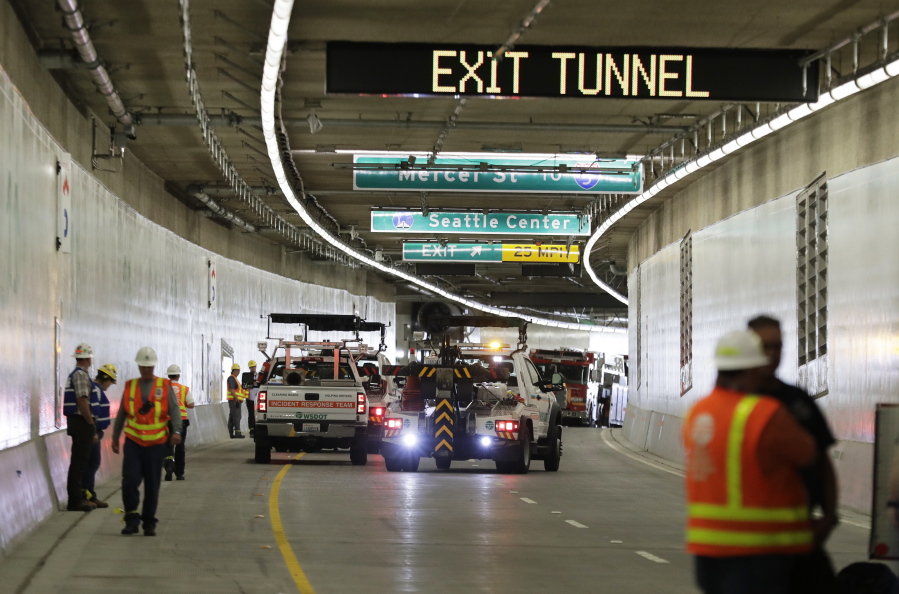SEATTLE — Police and fire sirens echoed across South Lake Union at noon Thursday, when first responders practiced dealing with a simulated crash in the nearly completed Highway 99 tunnel.
The scenario involved wrecked cars and buses in the northbound, upper level of the double-decked tunnel. About 24 people wearing makeup role-played as injured victims, while 20 others self-evacuated through escape stairs and halls west of the roadway, said Brittany Miller, deputy emergency manager for the Washington State Department of Transportation.
To add a twist, one crash victim was on a terrorist watch list, complicating the police reactions.
Emergency vehicles entered the giant highway tube near Mercer Street, using both the northbound and southbound lanes.
In an actual mass-casualty incident, police would wait a minute or two until oncoming traffic exits the tunnel, before officers drive “contraflow” toward the site, said Capt. Eric Sano of the Seattle police traffic squad. However, police and paramedics could still arrive by driving the other road deck in its normal direction — where they’ll park next to emergency staircases, and rush to meet victims on the other deck.
Officers would also close tunnel portals in both directions to general traffic, while tackling a major incident.
The federal Transportation Security Administration, which has supervised disaster exercises in many cities, provided advice about the scenario and observed the drill. A performance report could be published in about two months, Miller said.
The drill was scheduled to last until 2:30 p.m. The 1.7-mile tunnel from Sodo to South Lake Union opens for public use in early February.



